Aitouen’s the world-renowned tea production in the face of a challenging climate within the Kawane tea brand【Kawanecha, Shizuoka Prefecture】
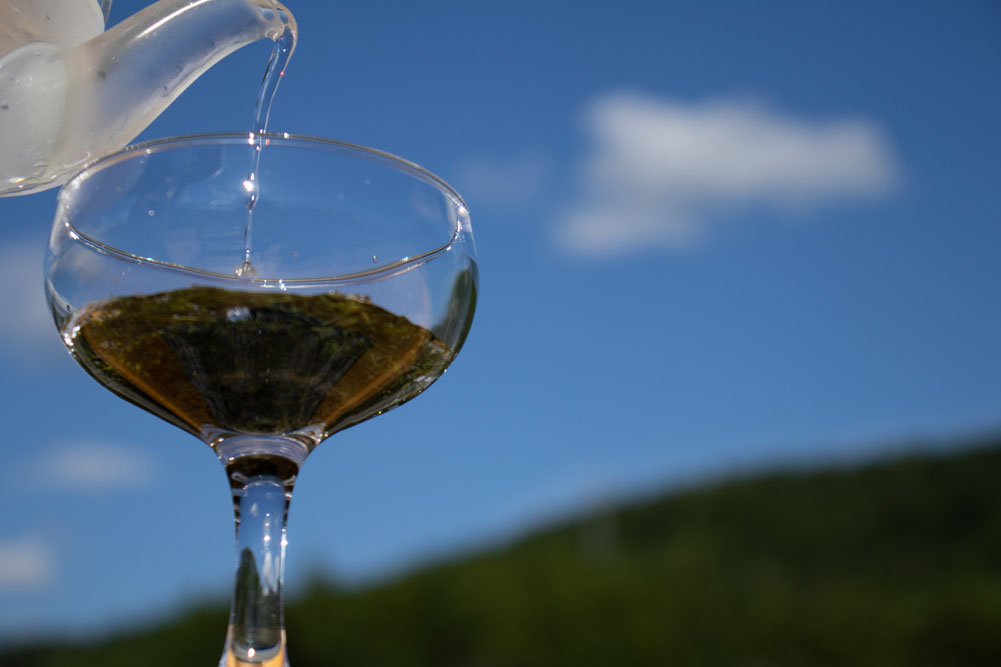
Every year, Japanese tea farmers pit their precious harvests against each other in competitions, in a chance to win the highest awards. The greatest accolade of all is the Minister of Agriculture, Forestry and Fisheries Award at the National Tea Fair. In the National Tea Fair of 2022, Aitouen in Kawanehoncho, Shizuoka Prefecture, was awarded this prestigious prize. Aitouen also won the Grand Prize at the 2021 International Tea Fair and the Gold Prize in 2023, cementing its status as a world-class tea producer. For this special interview, we visited their farm cafe”Kotori” in Kawane, where Reiji Aitou, the fourth generation owner of Aitouen, spoke to us directly about their acclaimed teas.
This article reports on the making of Kawane tea at Aitouen, the attitude of Kawane tea farmers in the face of a challenging climate within the tea industry, including an interview with Reiji Aitou, the owner of Aitouen.
Contents
- 1 About Aitouen
- 2 An Introduction to Aitouen’s Teas
- 3 Interview: Aitouen’s the world-renowned tea production and the current status of the Kawane tea brand.
- 3.1 Aitouen has been involved in tea production for over 40 years. They maintain that ‘the amount of nutrients the tea leaves absorb’ is the key to tea farming.
- 3.2 Aitouen’s unique fertiliser formula: the basis for delicious tea.
- 3.3 The leaves are hand-rolled for a trial to get a sense of the year’s quality. Then we look ahead to the harvest season.
- 3.4 Kawane tea is a well-known tea that always makes a name for itself at tea fairs. But what is the story behind its rapidly declining fame?
- 3.5 Aitouen’s farm cafe ‘Kotori’ serving a hands on Japanese green tea experience.
- 4 Information of Aitouen
About Aitouen
Aitouen is a tea farm engaged in the cultivation, processing and sale of their own brand tea products located in Kawanehoncho, Shizuoka Prefecture. The current owner is Reiji Aitou, the fourth generation to run the farm.
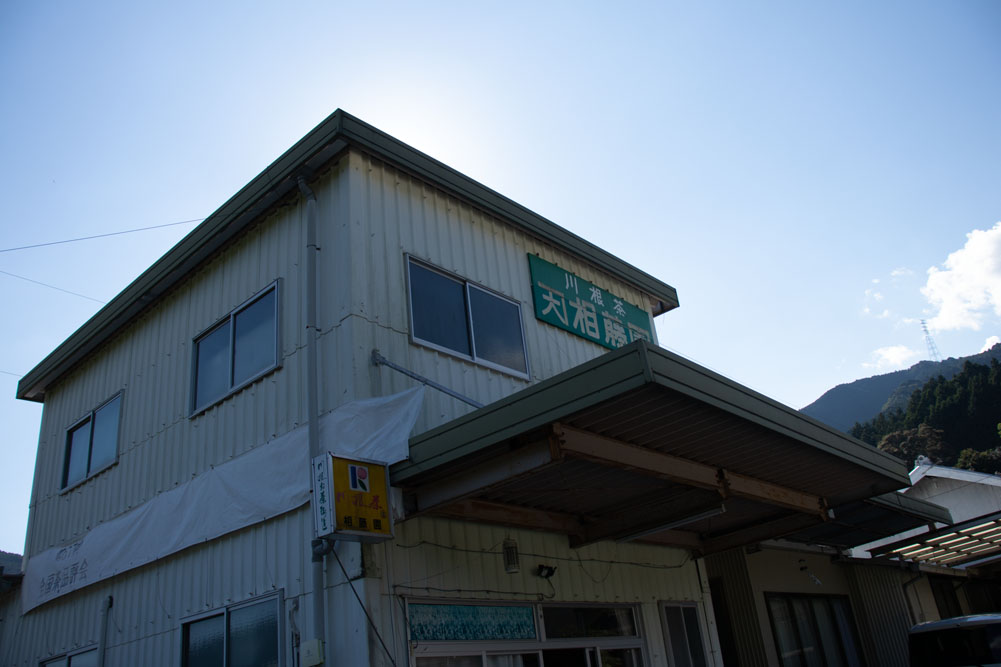
In 2022, Aitouen was awarded the Minister of Agriculture, Forestry and Fisheries Prize, the highest honour at the National Tea Fair. They were also awarded the Grand Prize and Gold Prize at the International Tea Fair two years running, their outstanding tea-making techniques and passion recognised worldwide.
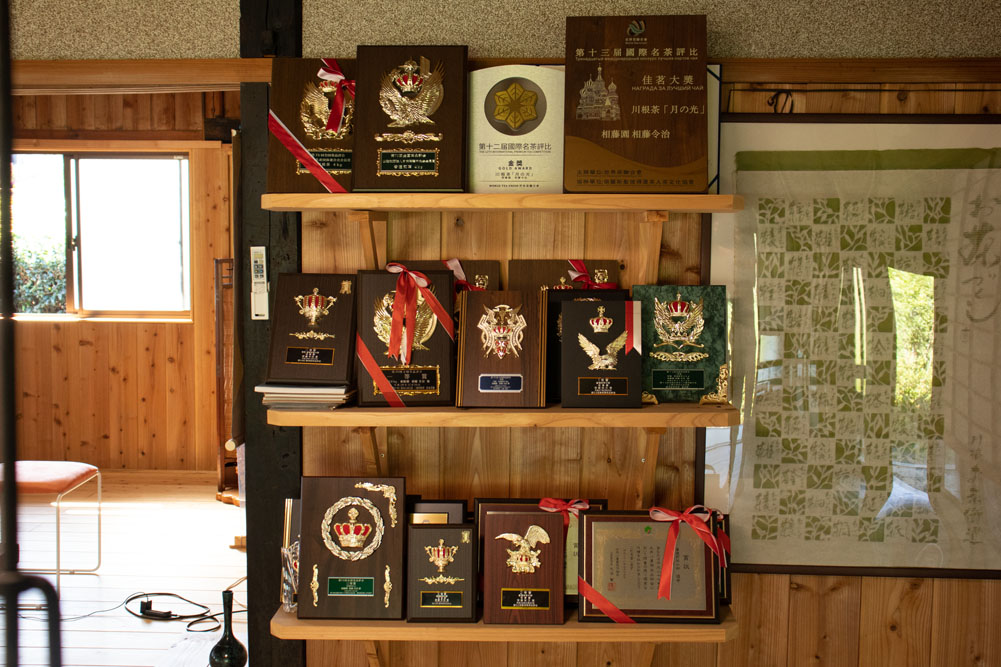
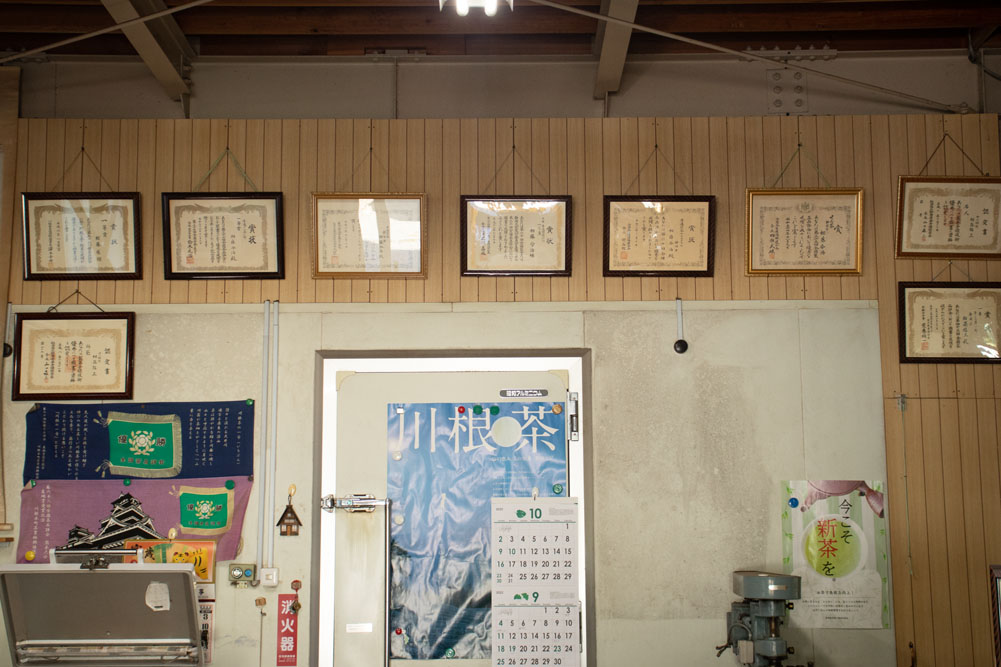 ▲The company has won dozens of awards at a variety of tea fairs.
▲The company has won dozens of awards at a variety of tea fairs.
Reiko Aitou’s uncle, Yoshio Aitou was also celebrated as a master of hand-rolling tea.
In the days when tea-making machines did not exist, tea was hand-rolled and finished by specialists called tea masters. Reiji Aitou’s uncle, the late Yoshio Aitou, won a competition for hand-rolling tea techniques for seven consecutive years and was ultimately declared a eisei (eternity) master of hand-rolling tea.

An Introduction to Aitouen’s Teas
Aitouen is located in Motofujikawa, Kawanehoncho, the middle reaches of the Oi River, which originates from Mt. Aino in the Minami Alps National Park. The region is known for extreme changes in temperature throughout the year and the tea produced here is known as ‘Kawane-cha’, a renowned tea with refreshing flavour described by the Japanese as jimi (freshness of flavour). It is produced in small quantities and is highly regarded as a luxury product throughout Japan.
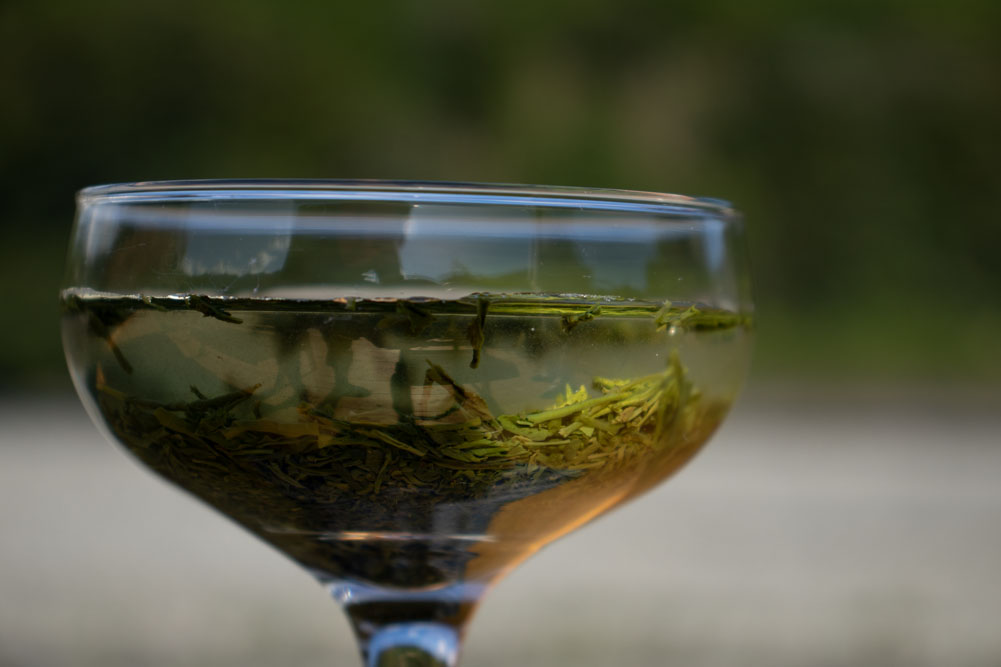
Of all the rare Kawane teas, Aitouen’s Kawanecha has a particularly high reputation. The outstanding quality of the tea can be demonstrated not only by the awards it has received at tea fairs, but also in the history of Aitouen’s dealings with teahouses in Nihonbashi, Tokyo, at a time when there was no transport access to Tokyo.
Here, we would like to introduce you to a few of Aitouen’s Kawane teas.
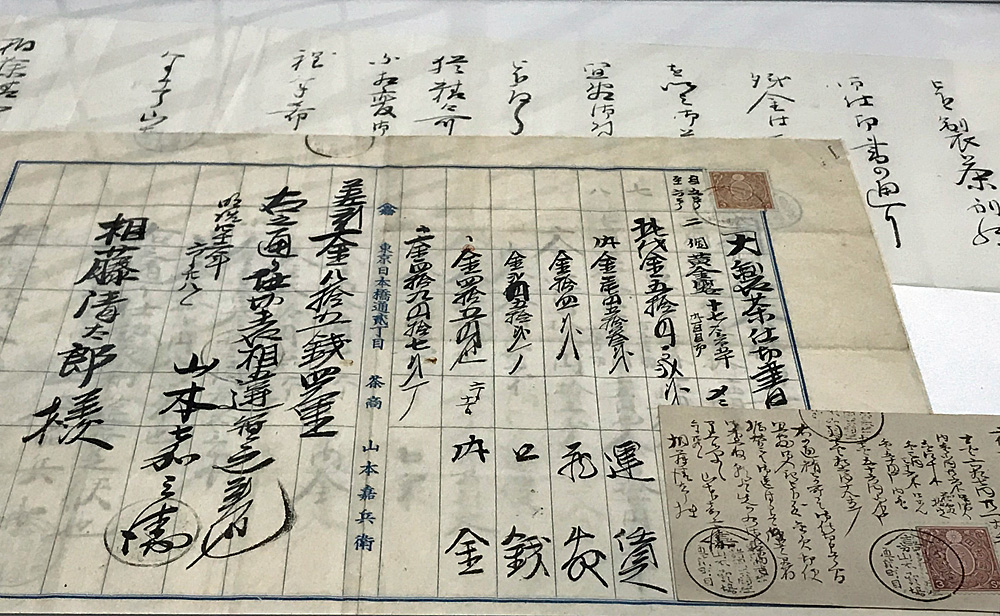 ▲An accounting book in which his great-grandfather, four generations before Reiji Aitou, handled trade with a central Tokyo teahouse. The price of tea from the end of the late meiji period to the beginning of the taisyou period is also clearly discernible (in Japanese).
▲An accounting book in which his great-grandfather, four generations before Reiji Aitou, handled trade with a central Tokyo teahouse. The price of tea from the end of the late meiji period to the beginning of the taisyou period is also clearly discernible (in Japanese).
Sencha – Tsuki no Hikari
Aitouen’s traditional asamushi sencha, extracted at a lower temperature in the first brewing to give a fresh, sweet, mild and delicate taste; in the second and third brewing, the temperature is raised and a clean astringent taste emerges, giving way to a refreshing aftertaste.


Kawane Black Tea
Aitouen’s signature Japanese black tea with a gentle taste and gorgeous aroma. It is recommended served without milk or sugar to favour its natural sweetness. It is served as part of the café menu at Forêt Nakakawane Chameikan.
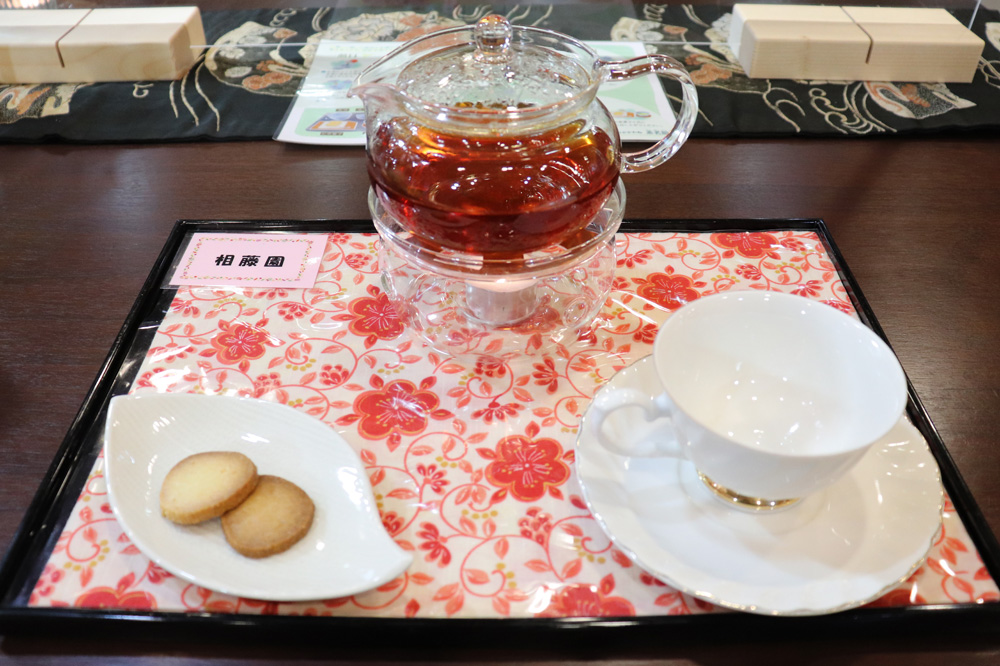

Interview: Aitouen’s the world-renowned tea production and the current status of the Kawane tea brand.
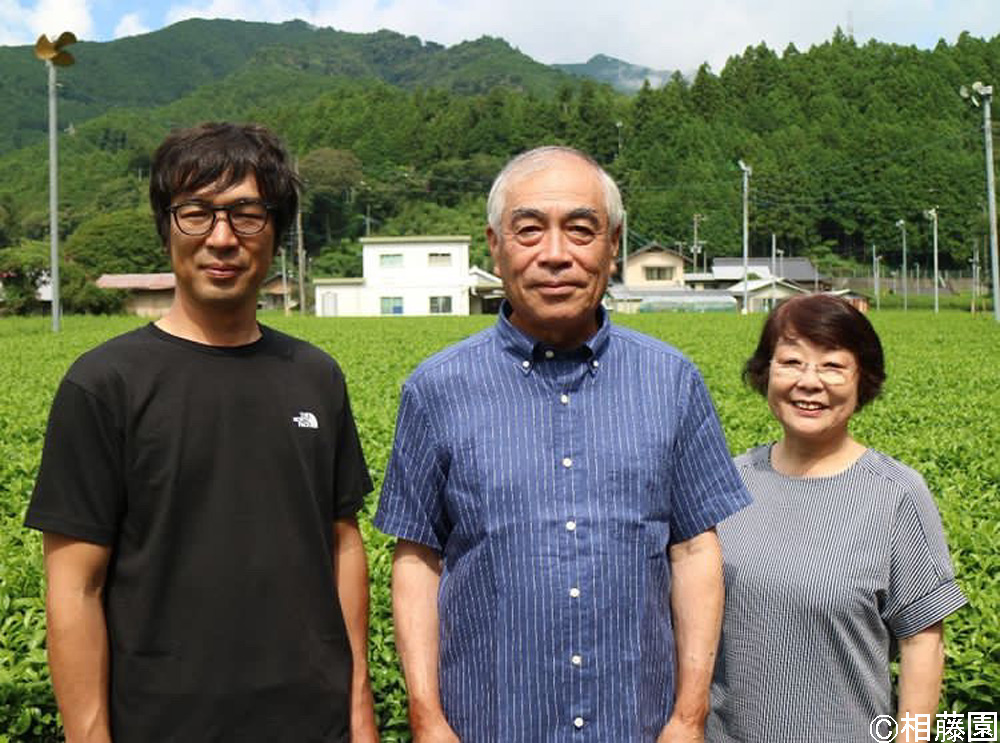
We spoke to Reiji Aitou, the fourth generation owner of Aitouen. (On the right is his wife, Saeko. On the left is his son, Yuji.)
Aitouen has been involved in tea production for over 40 years. They maintain that ‘the amount of nutrients the tea leaves absorb’ is the key to tea farming.
–Please tell us about your tea production.
I have over 40 years experience in tea making. Through a multitude of trials and errors, I have continued to explore numerous methods of producing good tea. For this reason, I have paid many visits to Takeshi Kaneko of the Ministry of Agriculture, Forestry and Fisheries.
From my experience, I can say that there are several important factors that contribute to growing high quality tea. One of the most important of these is how much nutrients the tea leaves absorb. Part of this important process is called ‘kesho-narashi’. Kesho-narashi refers to the process of removing leaves and branches protruding from the surface of the semicylindrical tea plant.
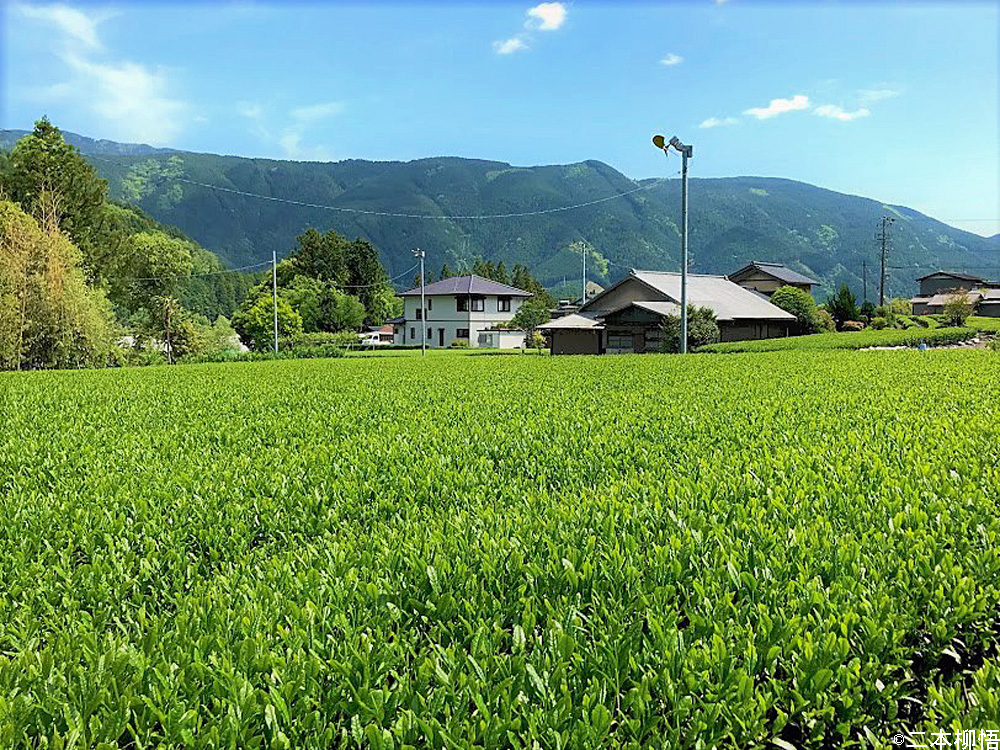
By removing excess material, the nutrients absorbed from the roots are more efficiently distributed to the tea leaves. The timing of this ‘kesho-narashi’ is crucial and should not be carried out too early or too late.
Based on many years of experience and knowledge, we carefully observe the plants’ growth and weather conditions to ensure the most appropriate timing.
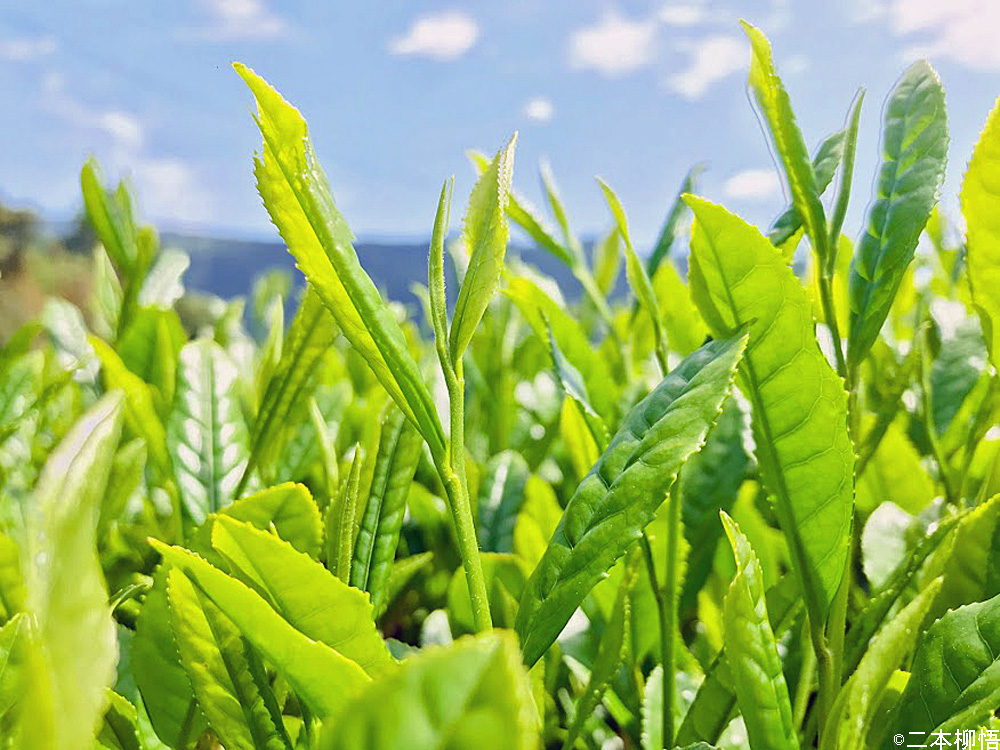
In recent years, as is probably the case throughout the country, the environmental conditions in the Kawane region has changed dramatically. I have been a tea farmer for over 40 years and I strongly feel that these changes are making it more and more difficult to judge the timing of operations. Lately, the season comes unusually early or, conversely, late.
Aitouen’s unique fertiliser formula: the basis for delicious tea.
Fertilisers are also extremely important in producing good tea. Aitouen uses a type of fertiliser called ‘bokashi’, which is a fermented mix of organic matter such as rice bran, fish, animal products and rapeseed meal with soil, chaff and other micro-organisms.
We believe that this ‘bokashi’ fertiliser is an important factor in growing strong tea plants and producing delicious tea. It took a lot of trial and error to arrive at this environmentally friendly fertiliser, one of the secrets of Aitouen’s excellent taste.
We believe that this ‘bokashi’ fertiliser is an important factor in growing strong tea plants and producing delicious tea. It took a lot of trial and error to arrive at this environmentally friendly fertiliser, one of the secrets of Aitouen’s excellent taste.
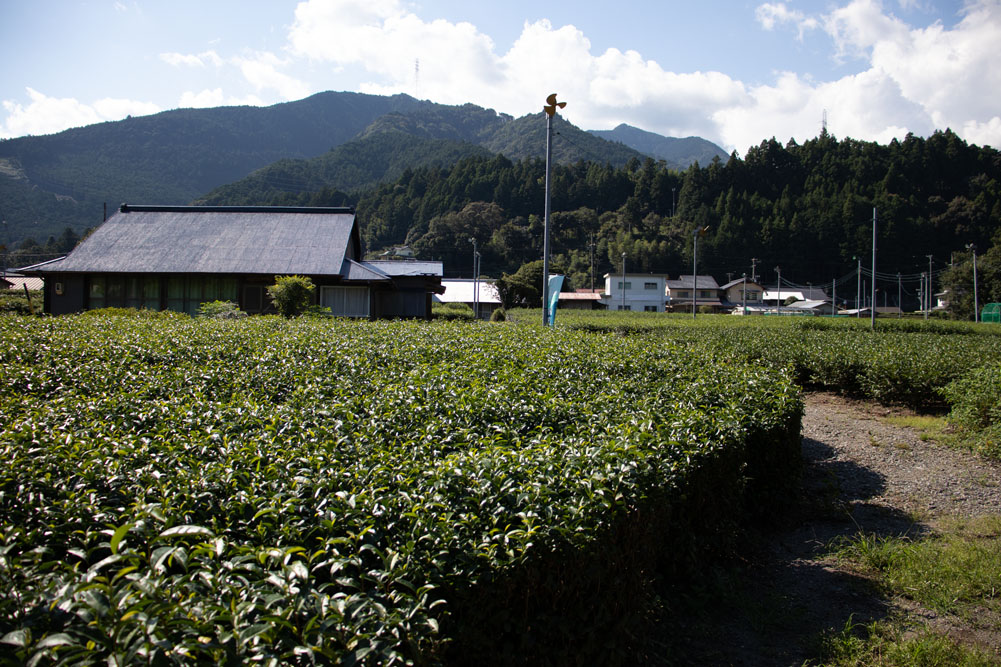
In the past, we made amino acid fertilizers by fermenting fish carcasses supplied from fishmongers. In those days, refrigerators and modern transport methods did not exist, yet we used to travel from one fishmonger to another.
There were days when, in the course of handling large quantities of fish, the strong odour became so deeply embedded in my skin that I was not allowed inside the house until it was thoroughly scrubbed off (laughs).
–I see, there has been a really steady series of efforts to get to where you are today.

The leaves are hand-rolled for a trial to get a sense of the year’s quality. Then we look ahead to the harvest season.
As the harvest season approaches, small quantities of tea leaves are plucked from the tea plantations and hand-rolled for a trial. This first preparation is designed to determine the quality of the year’s tea leaves. Aitouen is one of few tea farms in Kawane that performs this trial hand-rolling before the harvest season begins.
 ▲Reiji Aitou’s handmade stainless steel hoiro.
▲Reiji Aitou’s handmade stainless steel hoiro.
Once the harvest season is in full swing, the processing of tea leaves begins at the factory. Tea leaves harvested from the tea gardens in the morning are processed at the factory. Aitouen’s tea production places particular emphasis on freshness, so balance between the harvesting and processing systems are carefully monitored.
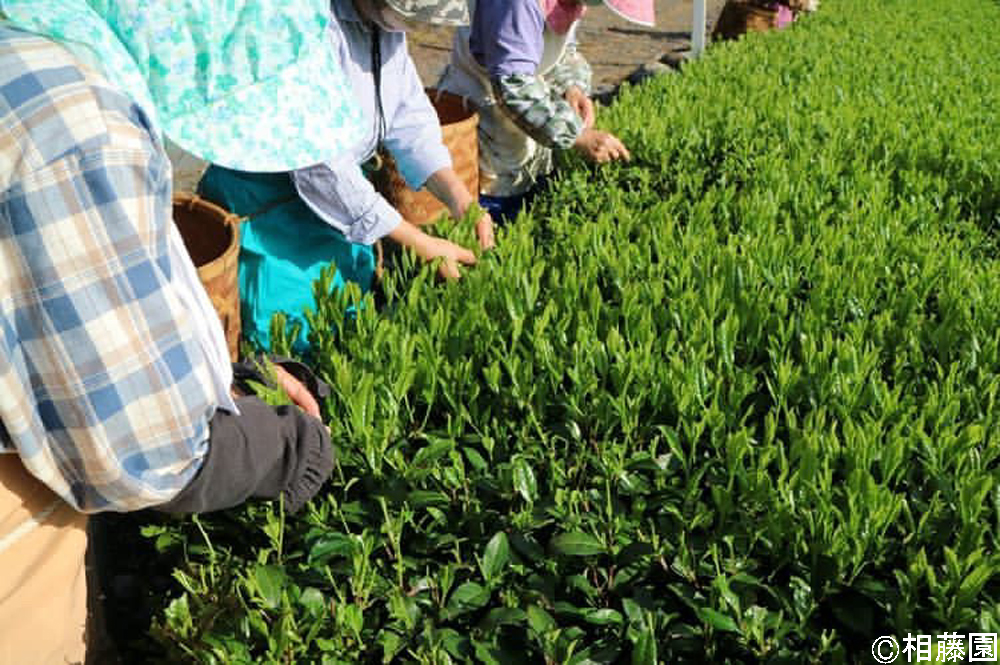
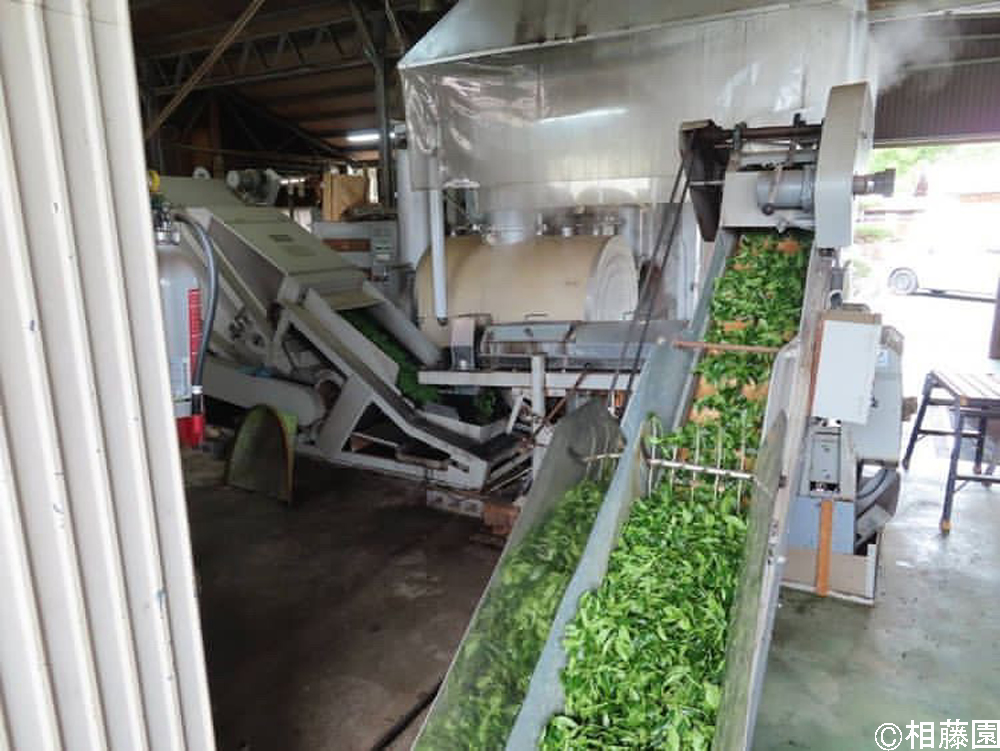
Therefore, only a manageable amount is harvested and all the leaves are processed into sencha on the same day. This time-consuming process is the reason why Aitouen’s Kawane tea has an aroma and taste unique to mountainous areas.
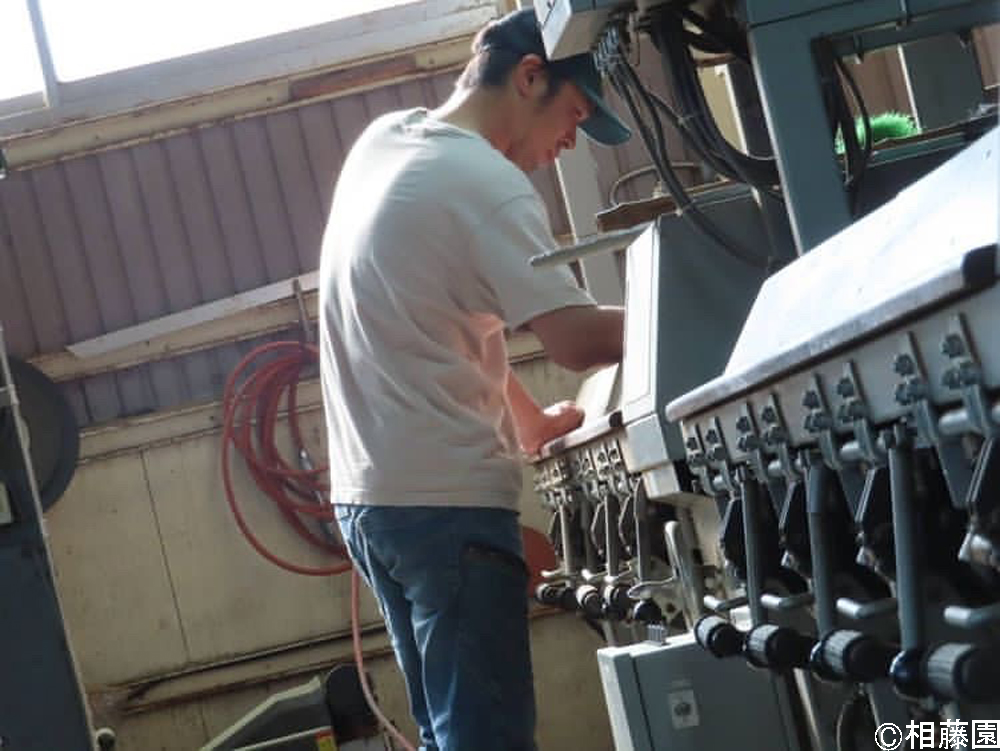
Kawane tea is a well-known tea that always makes a name for itself at tea fairs. But what is the story behind its rapidly declining fame?
–Kawane tea farmers are consistently named among the winners at tea fairs, aren’t they? Do you all socialise with each other?
Yes, we do. This region is home to some of the finest Kawane tea farmers who have made their names at said competitions. We respect each other and work hard together.
Near Aitouen is a farm called Matsushimaen. The Kawane tea produced by Mr Kawasaki, the owner of Matsushimaen, is truly excellent. A relative of mine, Aitou Nouen, is also located nearby. Aitou Nouen also produces excellent Kawane tea.
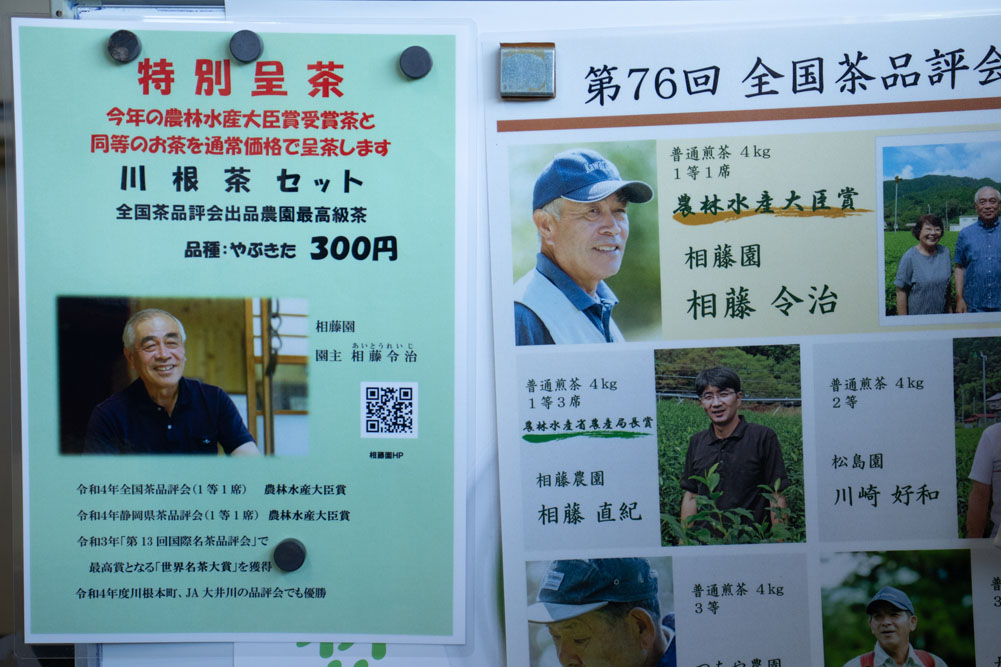
Although Kawane tea is of such quality that it has won awards at these competitions, its profile is rapidly declining. The cause was most likely the amendment to the labeling of tea products’ place of origin.
Years ago, Kawane tea was widely considered one of the highest quality Japanese teas. There was a time when simply labelling the tea as Kawanecha was enough to boost tea sales.
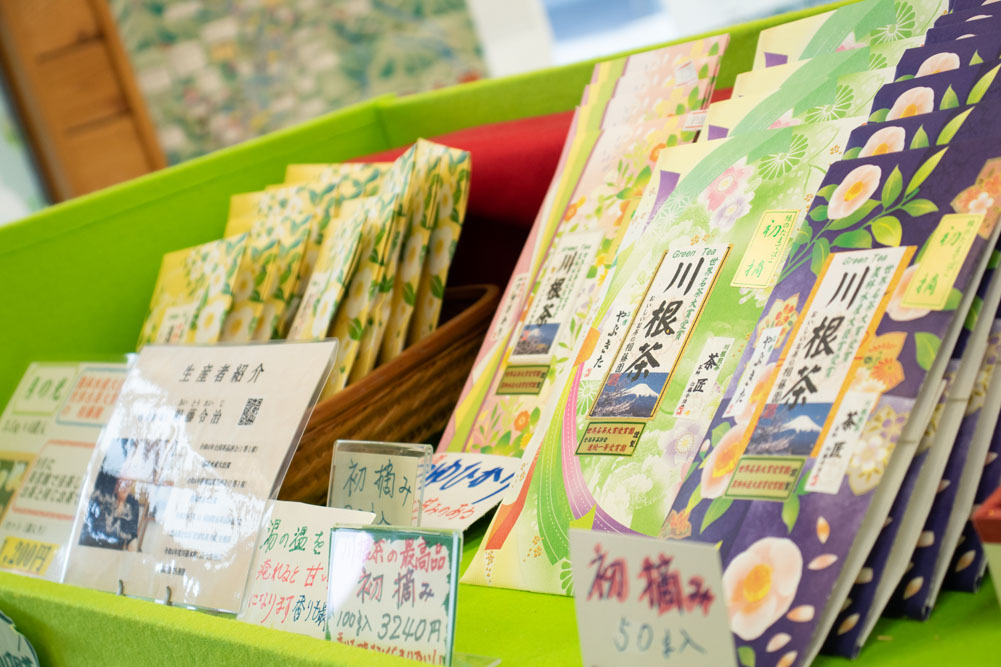
It turns out that certain companies were selling tea labeled as Kawanecha by blending a very small amount of tea produced in Kawane with other teas produced in different areas, using a traditional technique called gougumi (a combination of raw tea leaves from different production periods, locations and steaming conditions).
Awareness of sales methods that exploit the fame of a tea production area spread, and such practices eventually came to be criticised by the public.
It was then concluded that tea production areas need to be protected, and revision of the rules around origin labelling was prompted.
The new rule was that if the name of origin of the tea is displayed on the packaging, it must contain at least 51% of tea leaves from that region.
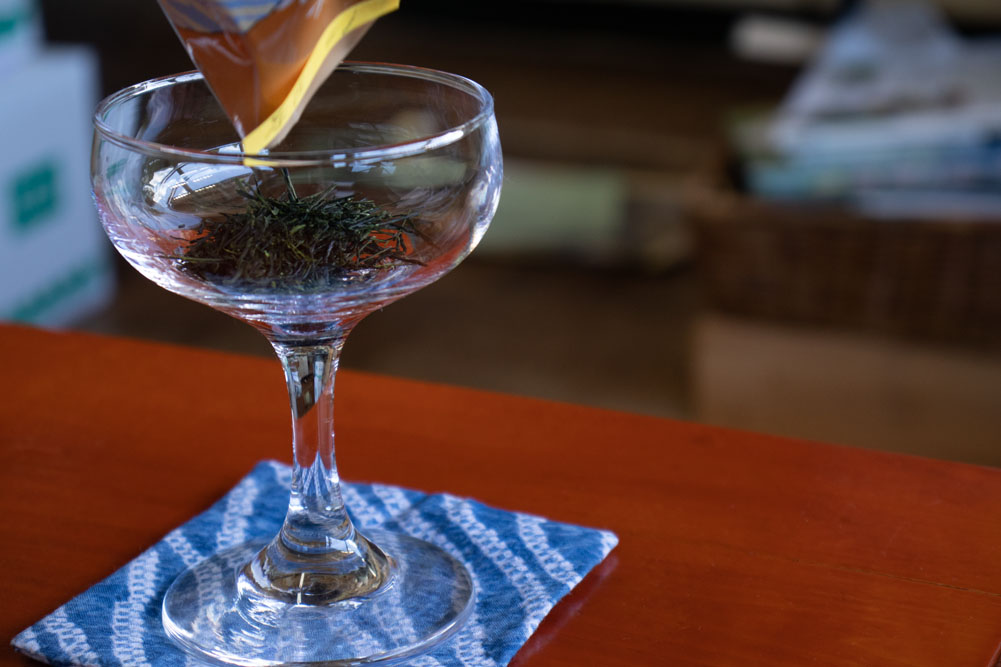
However, Kawane tea is a rare tea with good quality but extremely low-volume production. A breakdown of domestic production shows that Kawane tea accounts for only a few per cent. After the revision of the rules, most teas can no longer be labelled with the name Kawane cha and have disappeared from the market. As a result, Kawane tea has become a little-known production area brand.
The revision had the counterproductive effect of reducing the area of tea cultivated in Kawane, which originally covered only 600 hectares, to less than half. Today, the number of people who know about Kawane tea has decreased to about 25% of its peak.
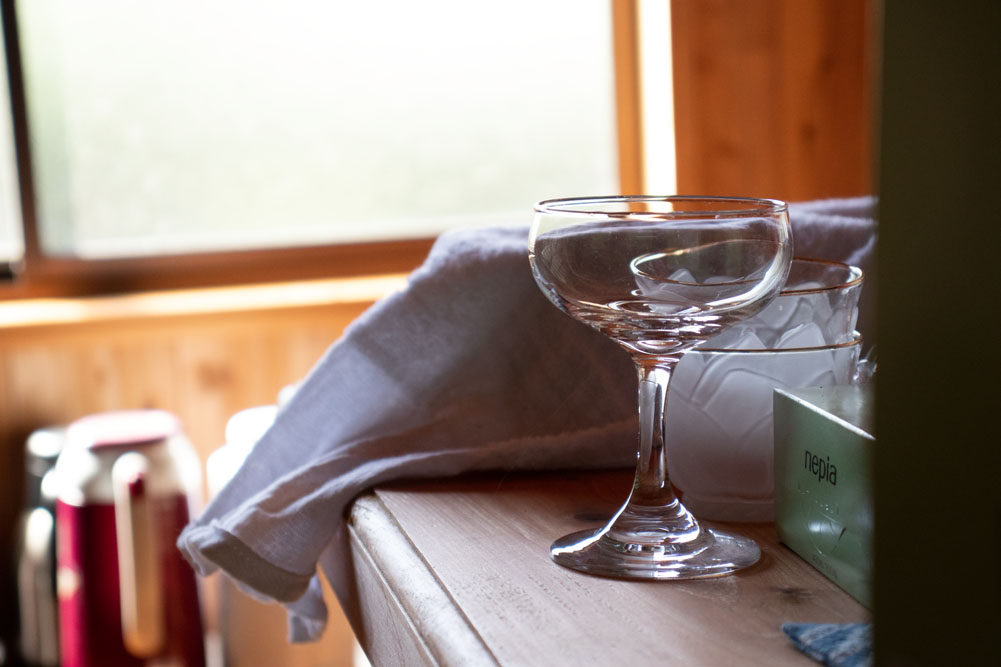
In the past, producing good quality tea ensured income for the next year. However, nowadays the price of aracha is too low, making it difficult for producers to generate sufficient income. So tea farmers are trying to figure out how to make a living. One answer is to run a retail business or a coffee shop. Realistically, there isn’t any other way to protect themselves than to price and sell their own tea. But to be honest, I wanted to concentrate more on growing and producing tea.


Aitouen’s farm cafe ‘Kotori’ serving a hands on Japanese green tea experience.
–Does Aitouen also have a cafe?
Yes, we do. We want people to enjoy genuine Kawane tea, and we also want to increase fans of our area and tea. Based on this concept, we set up our Kawane Tea Farm Cafe ‘Kotori’.
(*The cafe’s opening hours are fixed, always check in advance.)
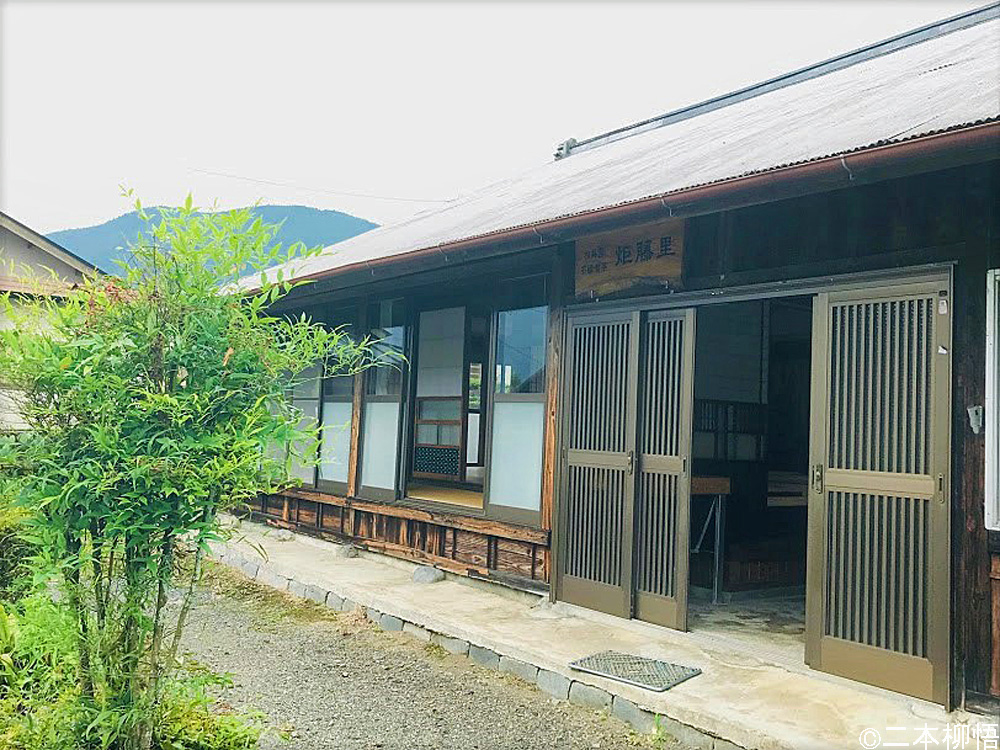
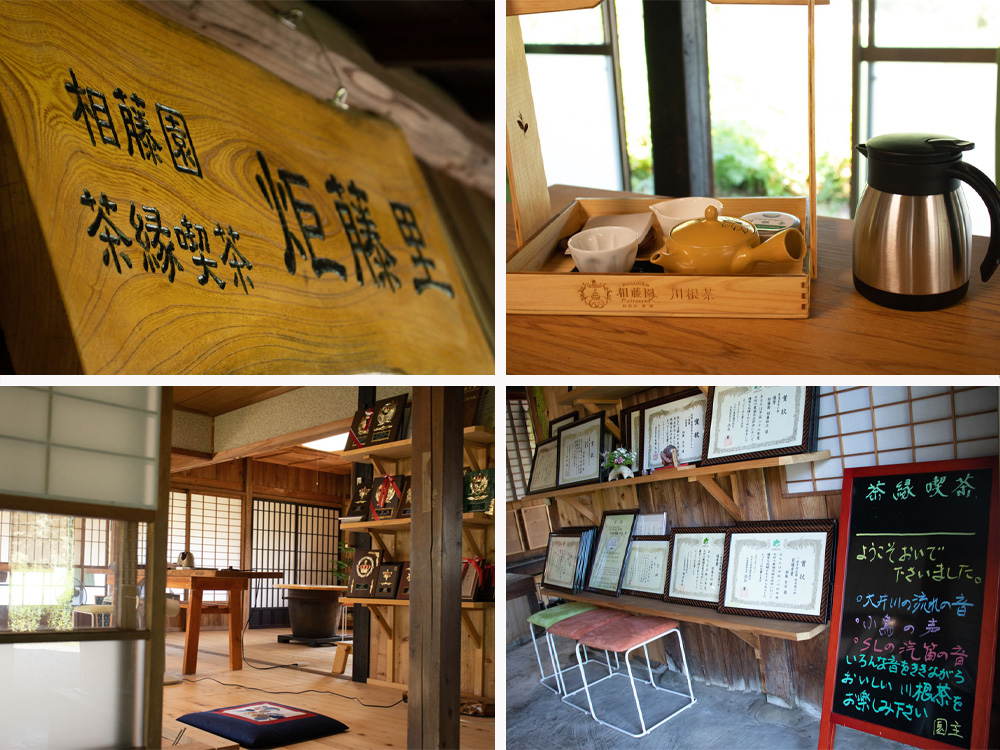
Kotori is a hands-on café. Tea leaves and utensils are provided, so guests are invited to brew a pot of tea and enjoy the aroma and taste of authentic Kawane tea.
A tea terrace was also set up in the summer of 2022. Well received by many customers, who enjoyed a cup of tea while admiring the spectacular nature of the Oi River and magnificent railway scenery.
(Note: Unfortunately, the Ōigawa Railway, which can be seen from Aitouen’s tea terrace, is closed from Ieyama Station to Senzu Station (as of 1st of November 2023).
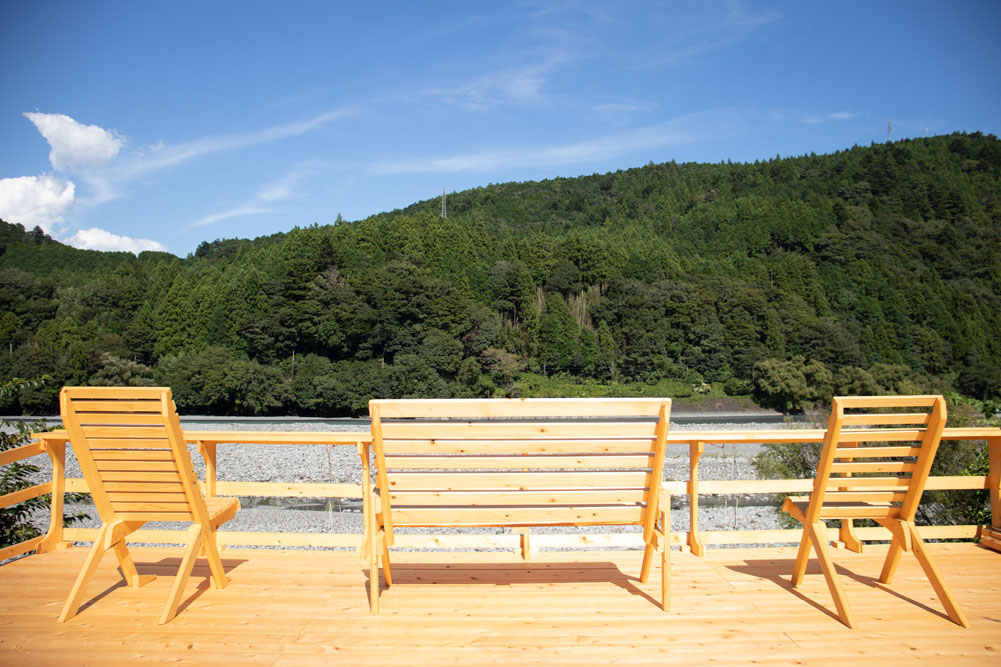

Those who taste Aitouen’s Kawane tea for the first time will be surprised how it is completely different the tea they are used to.
–Delicious. Sweet and tasty, as if bubbling slightly on the tongue. This is the unique jimi flavour of Kawane tea.
Generally, the taste of sencha is concentrated in the first infusion. From the second or third roast, it becomes increasingly closer to the taste of the tea everyone is used to drinking.
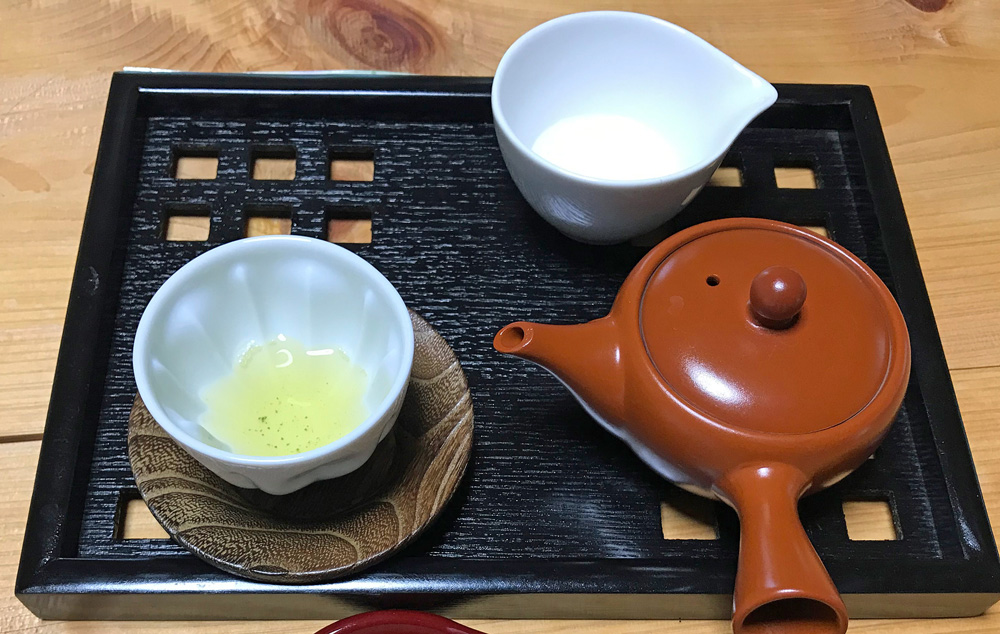
This is called ‘Susuricha’. This tea is made by slowly extracting award winning tea with cold water. It is a luxurious tea that is not likely to be found in ordinary cafes (laughs).

–This smell and taste is amazing. Delicious.
Seeing is believing. The best way is to actually experience the aroma and taste of Kawane tea is yourself. Particularly for the younger generation, the first taste of Kawane tea will seem like a completely new experience (laughs).
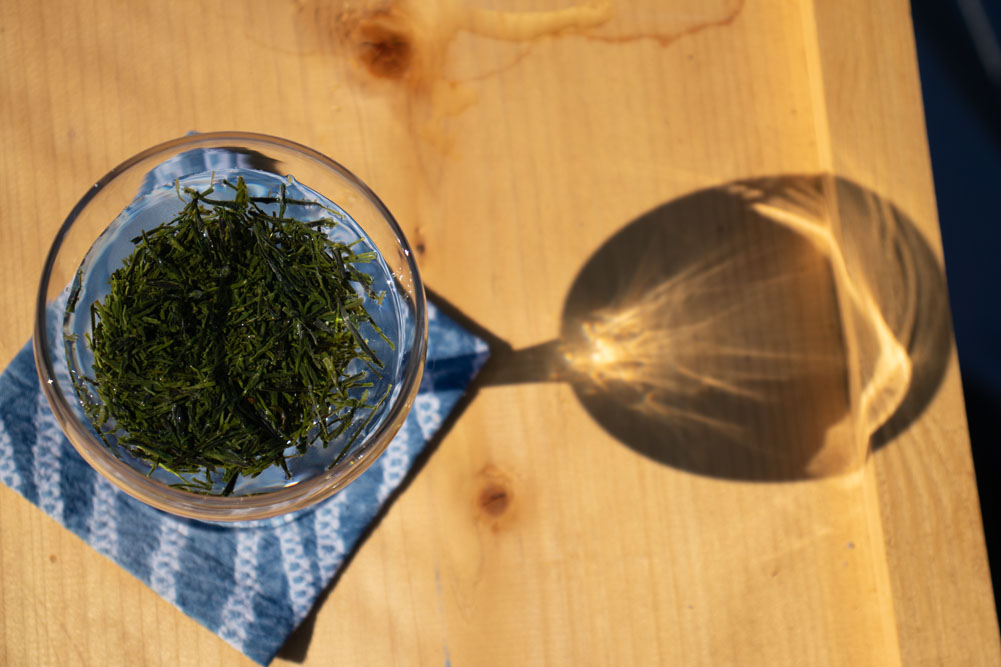
Related articles : Matsushimaen’s Tea Master speaks on his passion for Hiire tea leaves by charcoal-fire and perspective on current market【Kawanehoncho, Shizuoka Prefecture】
Information of Aitouen
| Address | Never visit without a prior appointment. |
| Website | Aito-en
http://www.fuji.ne.jp/~aitouen/ (Kawane Tea Farm Cafe) |
| Phone number | (japanese only)
Please do not suddenly visit tea farms without an appointment in advance, as it troubles farmers. |
| E-money and credit cards | Cash only |
| Open | Contact Aito-en(japanese only) |
| Closed | Check the websites above or contact Aito-en(japanese only) |
| Parking lot | Available for one or two cars |
| Writer | Norikazu Iwamoto |
| Career | Ochatimes chief editer. Meeting with Vice Governor of Shizuoka prefecture. Judge of Shizuoka 100 tea’s award in 2021~24. Ocha Times link introduced at website of World O-CHA(Tea) Festival 2022, Tea Science Center, The City of Green Tea Shizuoka, Ministry of Agriculture, Forestry and Fisheries. |
| English translator | Calfo Joshua |
| Career | Born and raised in England, living in Japan since 2016. Studying arboriculture in Shizuoka Prefecture whilst operating his landscape business Calfo Forestry. Appreciating the nature of Japan and the culture that places such importance in it. |


 Go to Japanese page
Go to Japanese page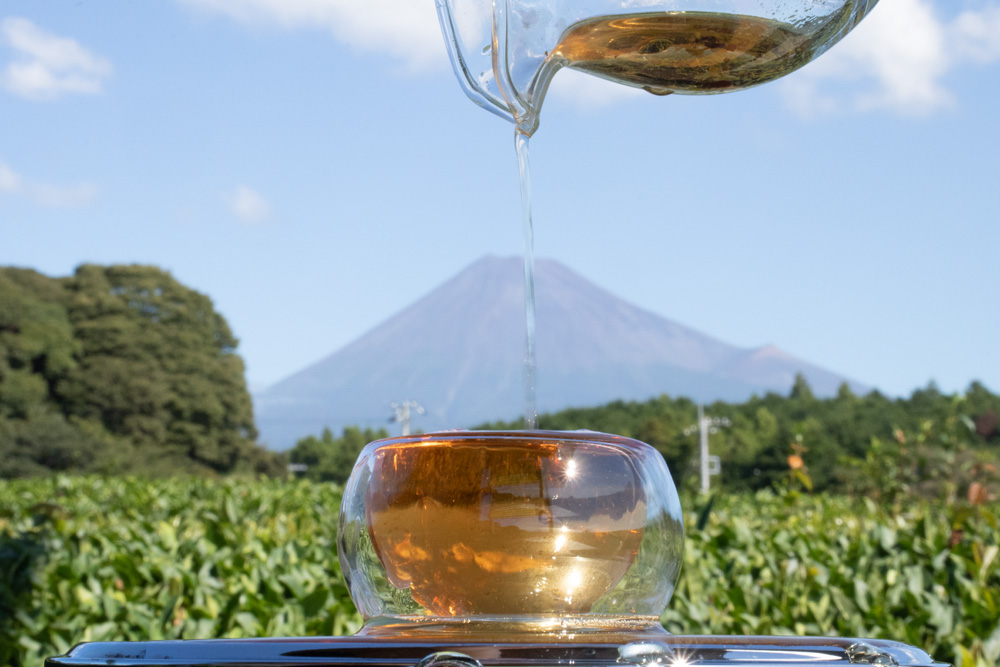
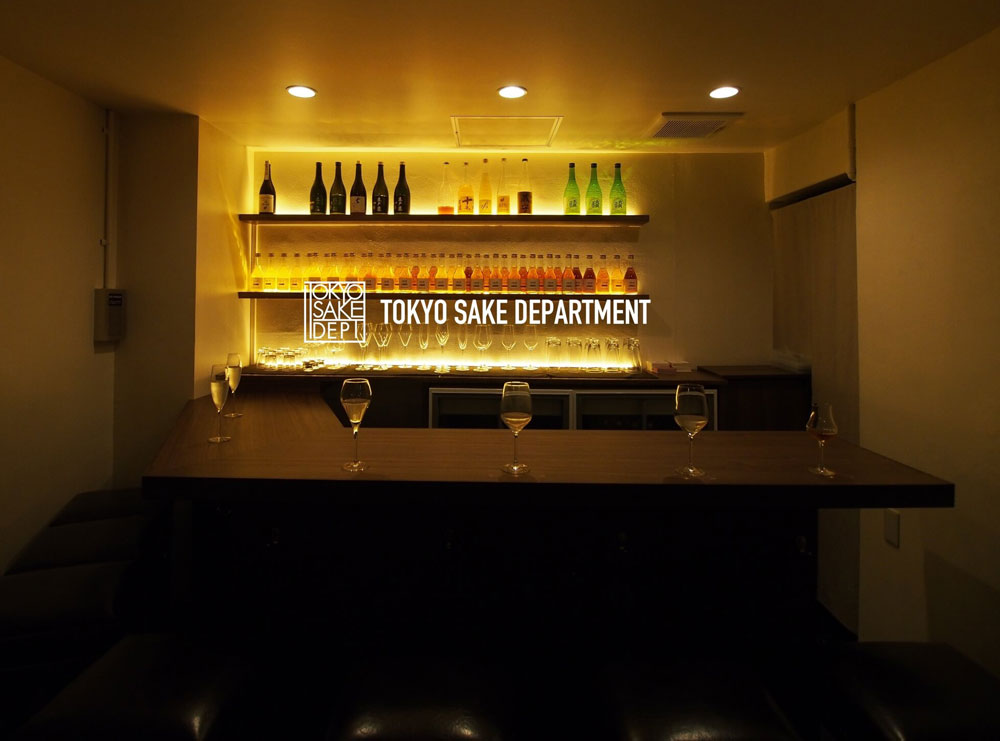
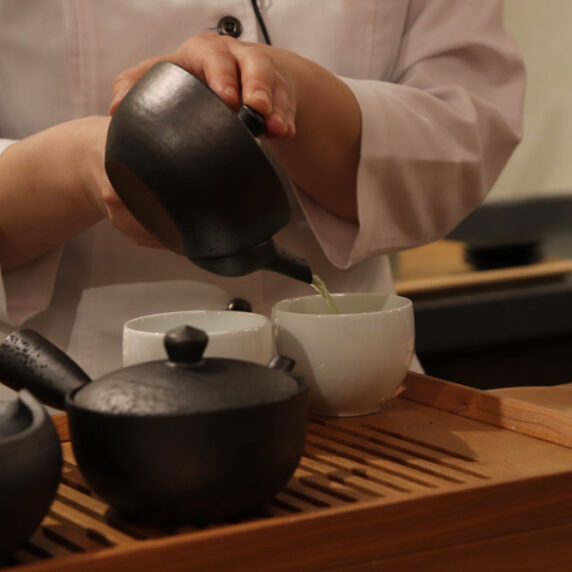
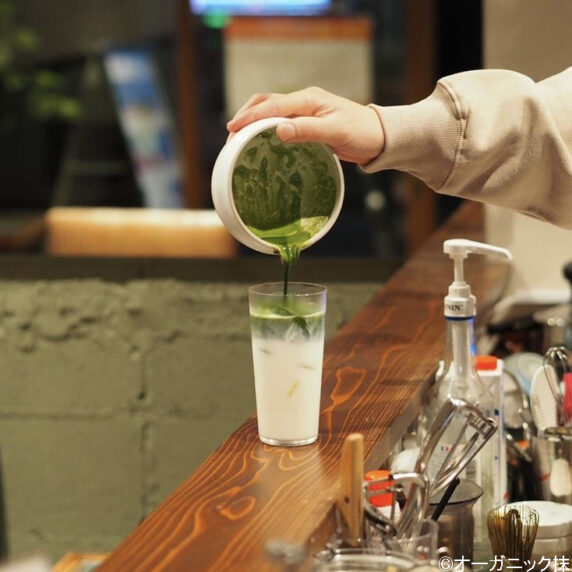




 on the red bar to close the slide.
on the red bar to close the slide. to see the
distance between the current location to the Chaya.
to see the
distance between the current location to the Chaya.